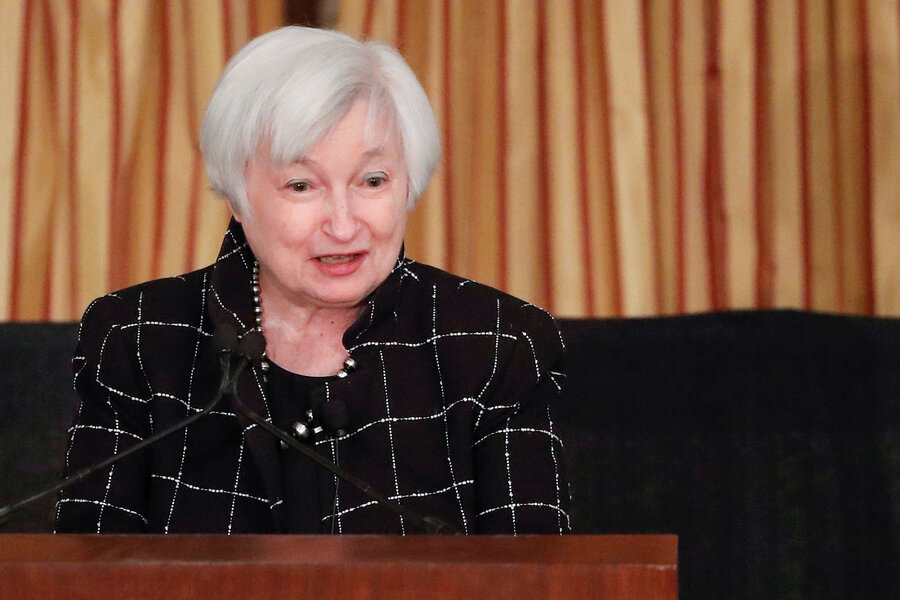Federal Reserve to hike interest rates: Why it's a good sign
Loading...
It is all but certain the Federal Reserve will raise interest rates after its policy meeting on Wednesday in order to slow inflation and cool a relatively hot economy.
Economists expect the raising of short-term interest rates to be the first of several this year, after a government employment report released on Friday showed the US added a healthy 235,000 jobs in February. Wall Street puts the odds of a rate raise at more than 90 percent.
Higher interest rates, of course, could lead to higher loan rates to borrow money for a home or car. In this case, however, it is also a good sign that the economy is quickly becoming more robust, nearly eight years after the Great Recession ended.
“Recent developments suggest that the macro economy may be at a transition,” Lael Brainard, a Fed governor, said in a March 1 speech, describing a situation of “full employment within reach, signs of progress on our inflation mandate, and a favorable shift in the balance of risks at home and abroad.”
The New York Times noted Ms. Brainard’s comments were all the more significant because she was perhaps the Fed's most vocal advocate of caution on rate increases just a year ago, arguing that geopolitical risks loomed large.
On Wednesday, the Fed is likely to raise its target interest rate a quarter of a percentage point. The raise will be the second in three months, with two more likely on the way in 2017, barring economic setbacks.
The hike is to make sure the economy doesn’t rise too fast, causing inflation – which is still fairly low at this point – to rise to excessive levels, explains MarketWatch’s Jeffry Bartash:
It may be strange to think of an economy growing just 2 percent a year — well the below the nation’s 3.3 percent historic average — as overheating. Yet the U.S. expansion is now almost eight years old, the labor market is tight and the unemployment rate is near a nine-year low of 4.7 percent. Companies have to pay more to find workers and wages are rising at the fastest pace since the recovery began in 2009.
The February job report on Friday all but sealed the deal on this rate hike. Of the 235,000 jobs added in February, the construction industry added 58,000 jobs, the most in a decade. While economists agreed that February’s unseasonably warm weather inflated this figure, the nation's unemployment rate also fell. It dropped to a low of 4.7 percent from 4.8 percent.
All of this news appears to point to an economy with one of its strongest footholds in nearly eight years, leading the Fed to shift its approach.
“We are seeing an evolution away from a tactical approach toward a strategic approach,” Mohamed El-Erian, chief economic adviser at Allianz, told the Times. “Their stance now is that they will focus on the destination, not the journey, and that they will lead markets rather than be led by markets.”
The strength of the economy is great news for workers, Laurent Belsie reports for The Christian Science Monitor.
“[T]he shortage is forcing increasingly desperate employers to boost pay and benefits to attract and hold onto recruits in several fast-growing industries. Average wages are starting to grow at rates not seen since 2000, the last time the US confronted a severe worker shortage,” he wrote.
“The challenge,” he adds, “is economic growth: Not having enough workers is already curtailing production in some areas. And if wages and salaries go up faster than corporate profits, companies will see their bottom lines suffer and, potentially, their stock prices fall.”
Expect the wage growth to continue to accelerate, Gad Levanon, chief economist for North America at The Conference Board, a global business group based in New York, told the Monitor.
This report contains material from the Associated Press.





